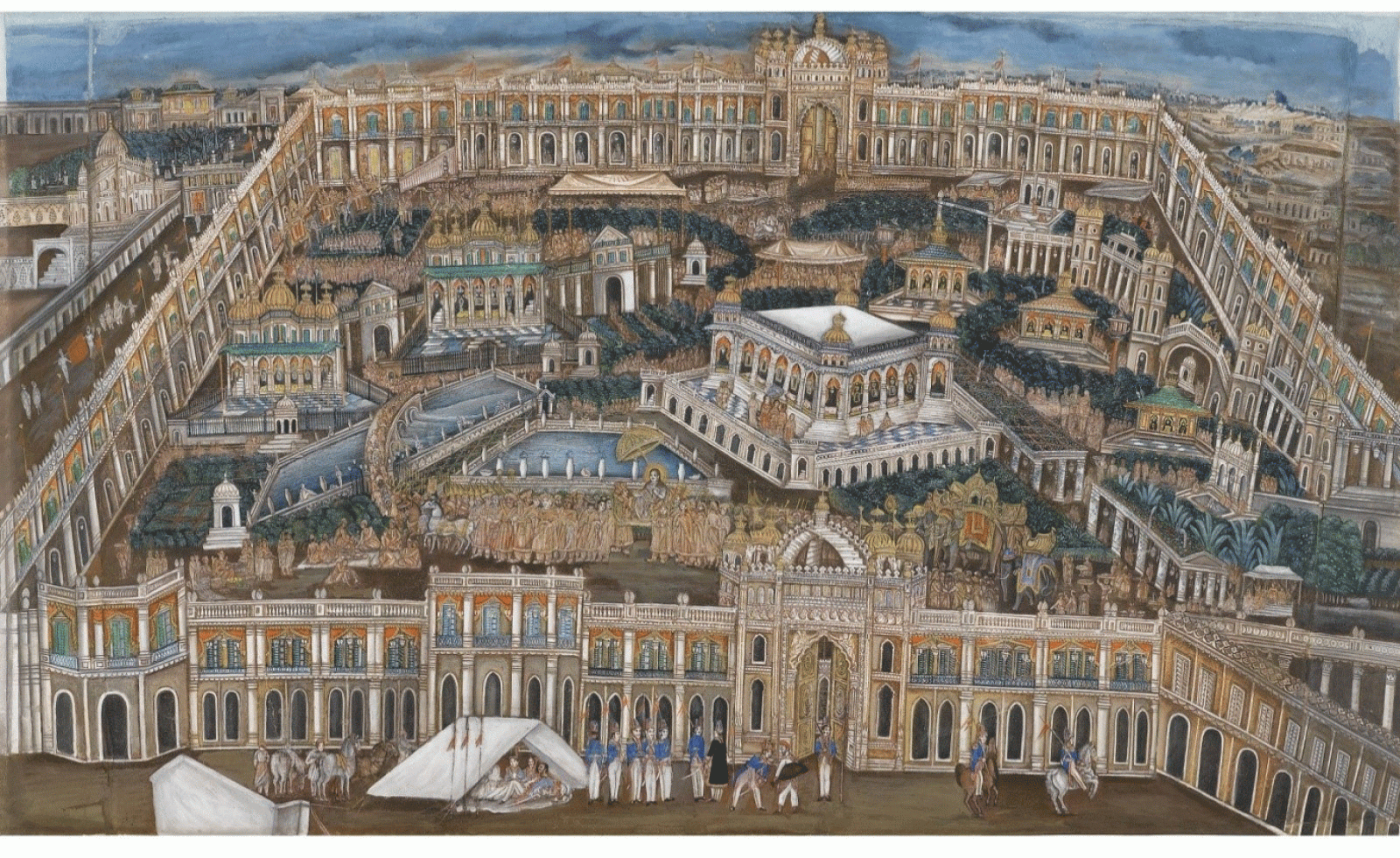Research
The Gardens of Qaiserbagh: Between Myth, Reality and Illusion
Parul Singh

Wajid Ali Shah in a procession in Qaiserbagh palace, Private Collection.
The research project focuses on the Qaiserbagh, or “Caesar’s Garden”, in Lucknow–a lavish palace complex built by the last king of Awadh, Wajid Ali Shah. The author investigates the Qaiserbagh as both a tangible spatial entity and a projected mental space, as it was envisioned in the minds of Wajid Ali Shah and his contemporaries. To this scope, she analyses coeval accounts and poetry that imagined the Qaiserbagh as a paradisiacal garden where the king dwelt with his paris (“fairies”)–the court singers and dancers who lived in the Parikhana (“House of Fairies”) within the Qaiserbagh complex. The poetry written by the king himself conflates the symbolism of the plants and the gardens with the bodies of the paris, imagining them as luscious fruits and flowers. The author explores how such images elaborate the metaphors of the evergreen garden and of the king as gardener, and how they portray the consumption of fruits, flowers, and women in the royal gardens as a kingly right. She also highlights how contemporary accounts linked, by means of cross-cultural convergences of metaphors and discourses, the king and his harem to Solomon and his paris, to Krishna and his gopis (female cowherd companions), and to Indra and his paris. Finally, by reflecting on the conflation of public and private space in the Jogia Melas, or “Fairs of the Hermit” – a public celebration held in the royal gardens and open to all – the author highlights how the Qaiserbagh was inextricably linked to the spaces, communities, and networks forming the winder landscape of mid-nineteenth-century Lucknow.
This project is part of the Research and Fellowship Program 4A Laboratory: Art Histories, Archaeologies, Anthropologies, Aesthetics, a cooperation between the Kunsthistorisches Institut in Florenz and the Stiftung Preußischer Kulturbesitz.


